Abstract
Previously we [Sabine & James (1976) Life Sci. 18, 1185--1192] proposed that 'the activity of hepatic beta-hydroxy-beta-methylglutaryl-coenzyme A reductase is critically regulated by the fluidity of its supporting microsomal membrane'. In the present work we examined further this concept of membrane-mediated control, with respect to the specific hypothesis that such control might function as a common mechanism both for the co-ordinated regulation of other enzymes affected by cholesterol feeding and also for the subcellular integration of the several physiological factors known to influence this enzyme's activity. Contrary to earlier expectations, this hypothesis now appears not to hold. We report here that, under those conditions of short-term cholesterol feeding that affected the reductase, a variety of other microsomal enzymes did not display membrane-function interactions, i.e. neither enzymes involved in cholesterol metabolism and also affected by cholesterol feeding (cholesterol 7 alpha-hydroxylase), nor those involved in cholesterol metabolism and not affected by cholesterol feeding (hydroxymethylglutaryl-CoA hydrolase, acyl-CoA:cholesterol acyltransferase), nor those not directly involved in cholesterol metabolism at all (glucose 6-phosphatase). Furthermore, we observed no evidence for the operation of membrane-mediated control of the reductase in other situations known to influence its activity, i.e. starvation, diurnal rhythm, the very early stages of cholesterol feeding and various manipulations in vitro.
Full text
PDF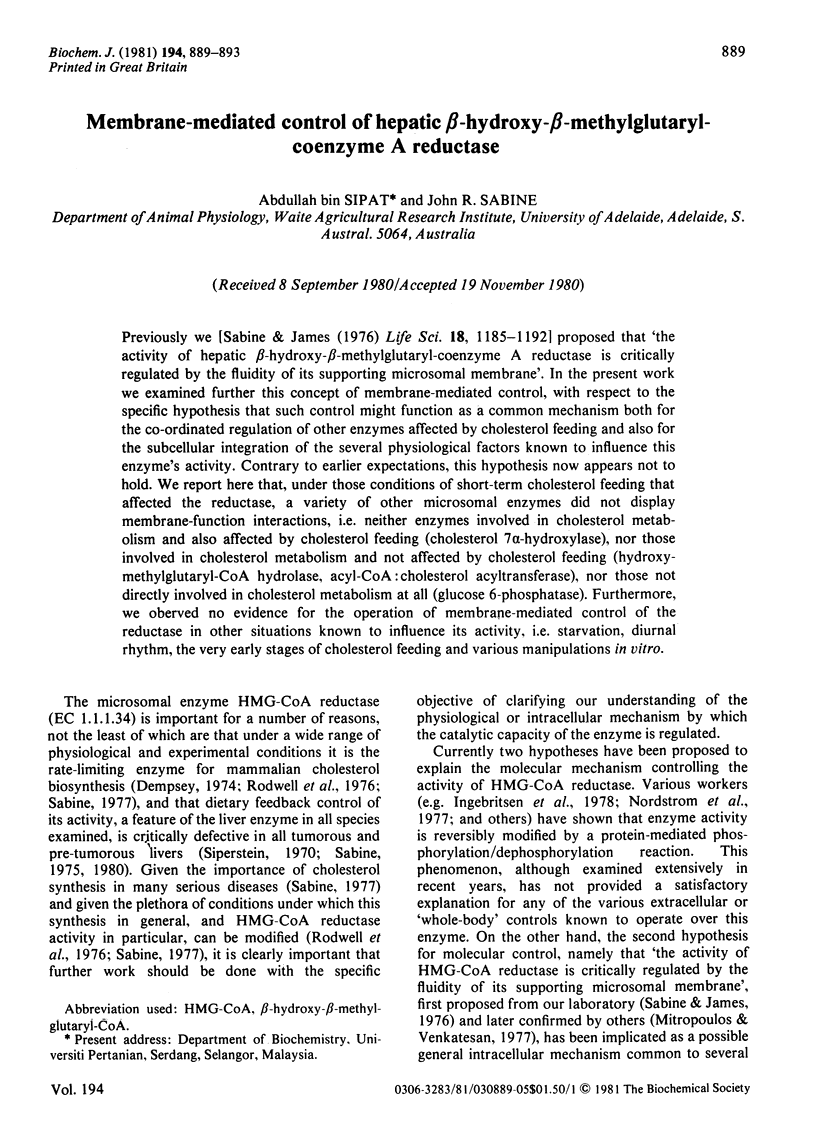
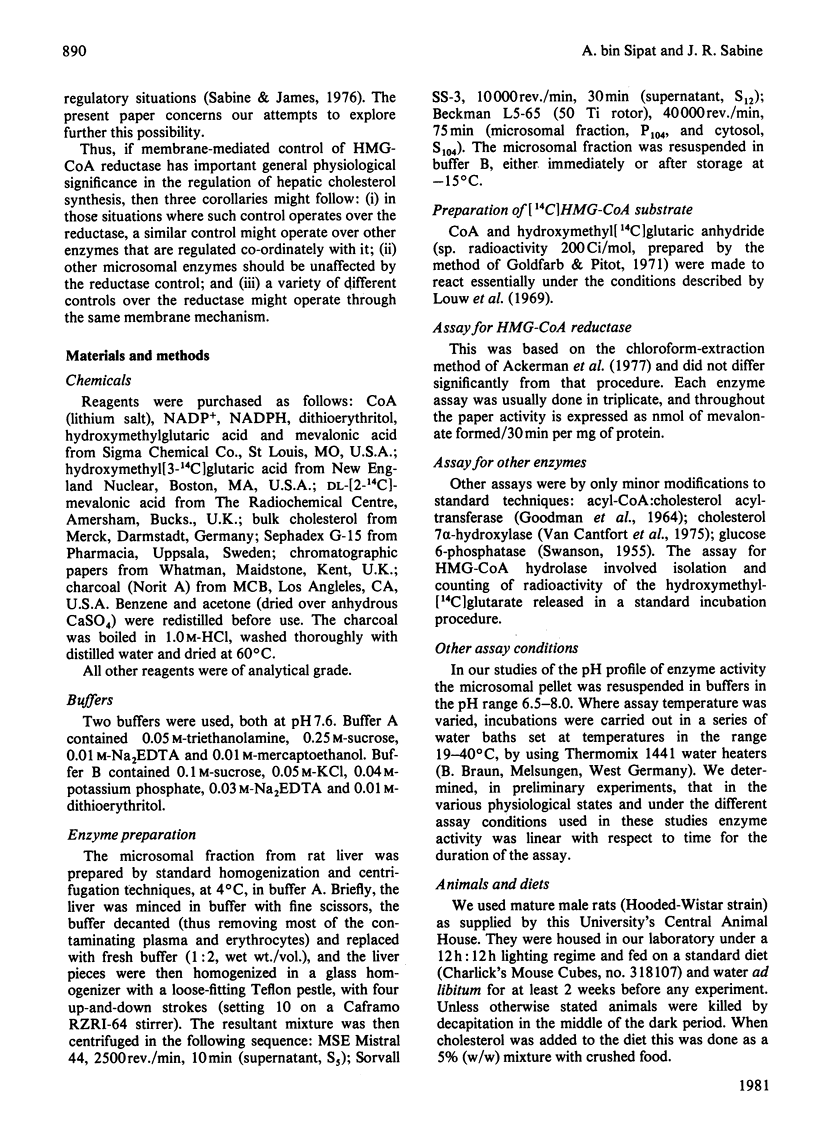
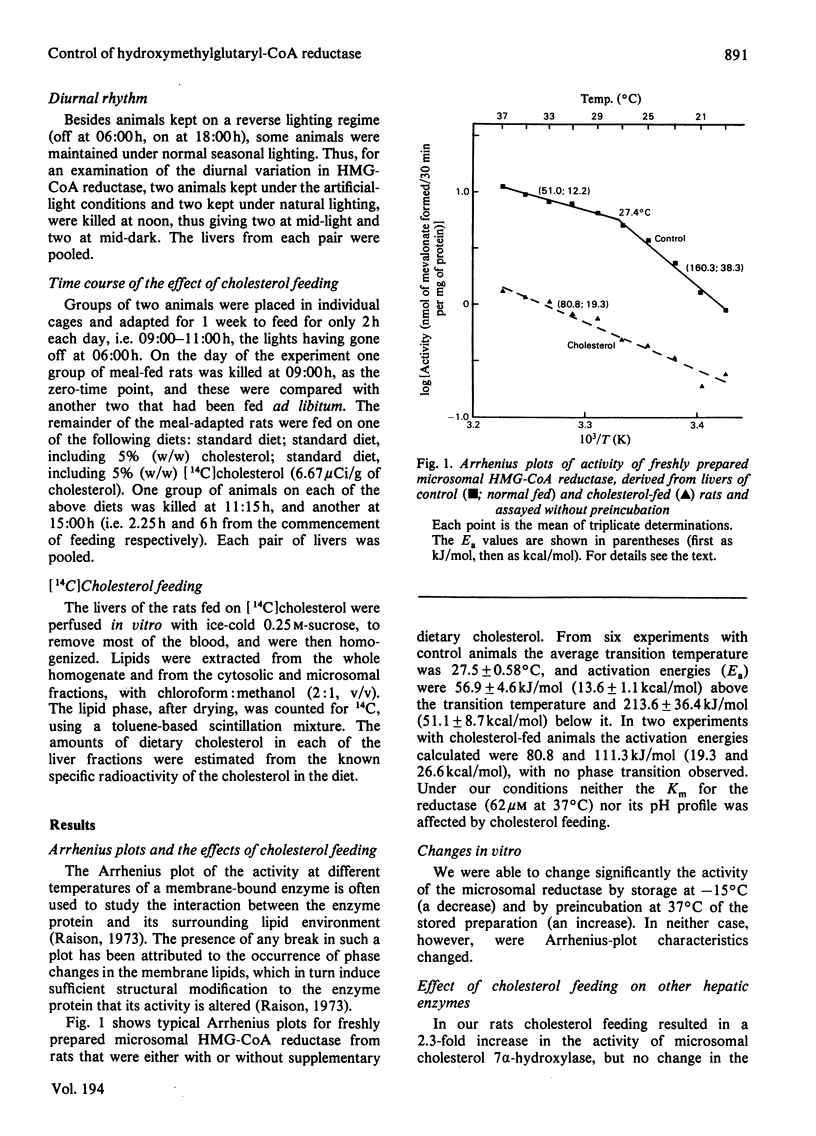
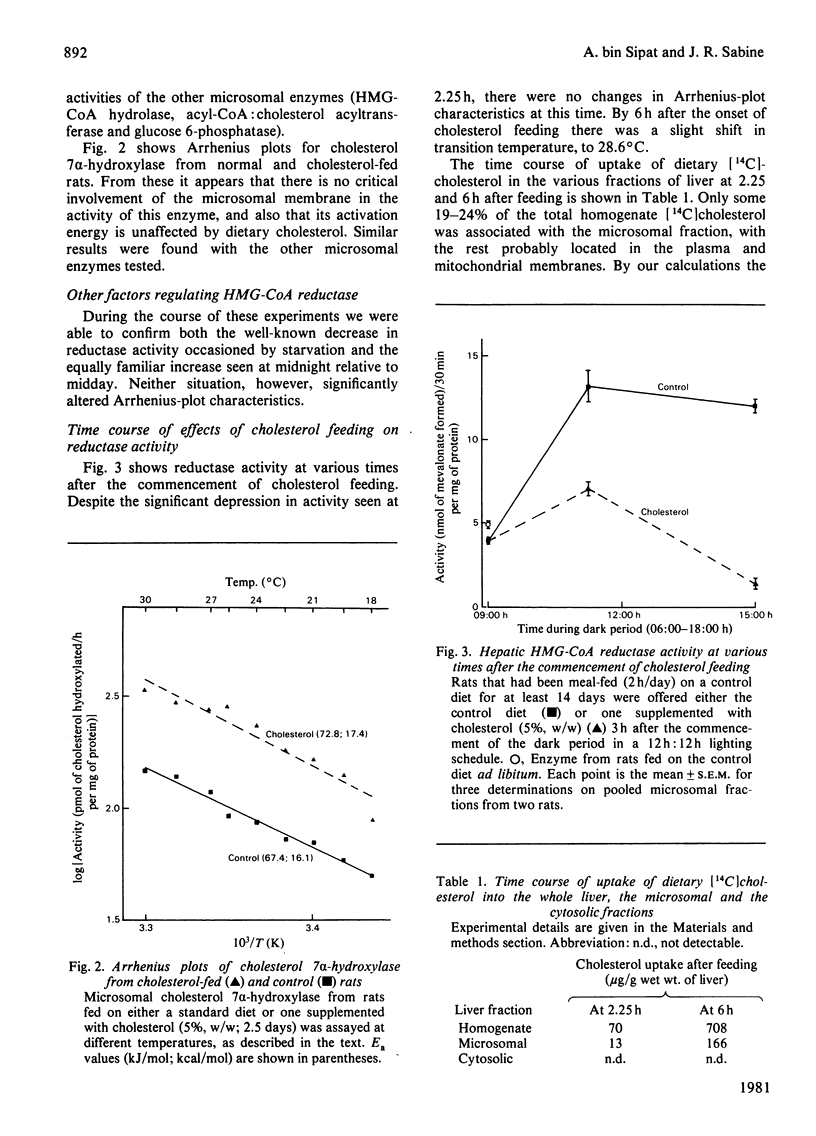
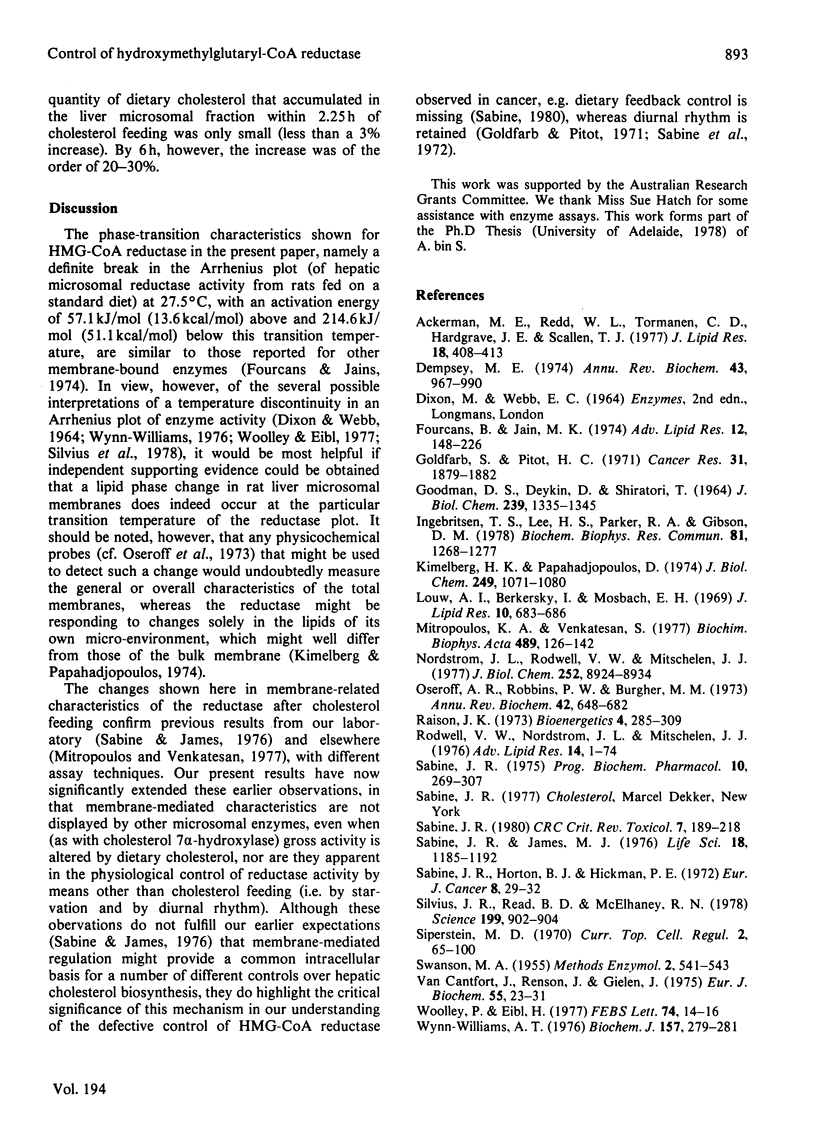
Selected References
These references are in PubMed. This may not be the complete list of references from this article.
- Ackerman M. E., Redd W. L., Tormanen C. D., Hardgrave J. E., Scallen T. J. The quantitative assay of 3-hydroxy-3-methylglutaryl coenzyme A reductase: comparison of a thin-layer chromatographic assay with a rapid chloroform extraction assay. J Lipid Res. 1977 May;18(3):408–413. [PubMed] [Google Scholar]
- Dempsey M. E. Regulation of steroid biosynthesis. Annu Rev Biochem. 1974;43(0):967–990. doi: 10.1146/annurev.bi.43.070174.004535. [DOI] [PubMed] [Google Scholar]
- Fourcans B., Jain M. K. Role of phospholipids in transport and enzymic reactions. Adv Lipid Res. 1974;12(0):147–226. doi: 10.1016/b978-0-12-024912-1.50011-9. [DOI] [PubMed] [Google Scholar]
- GOODMAN D. S., DEYKIN D., SHIRATORI T. THE FORMATION OF CHOLESTEROL ESTERS WITH RAT LIVER ENZYMES. J Biol Chem. 1964 May;239:1335–1345. [PubMed] [Google Scholar]
- Goldfarb S., Pitot H. C. The regulation of beta-hydroxy-beta-methylglutaryl coenzyme A reductase in Morris hepatomas 5123C, 7800, and 9618A. Cancer Res. 1971 Dec;31(12):1879–1882. [PubMed] [Google Scholar]
- Ingebritsen T. S., Lee H. S., Parker R. A., Gibson D. M. Reversible modulation of the activities of both liver microsomal hydroxymethylglutaryl coenzyme A reductase and its inactivating enzyme. Evidence for regulation by phosphorylation-dephosphorylation. Biochem Biophys Res Commun. 1978 Apr 28;81(4):1268–1277. doi: 10.1016/0006-291x(78)91273-1. [DOI] [PubMed] [Google Scholar]
- Kimelberg H. K., Papahadjopoulos D. Effects of phospholipid acyl chain fluidity, phase transitions, and cholesterol on (Na+ + K+)-stimulated adenosine triphosphatase. J Biol Chem. 1974 Feb 25;249(4):1071–1080. [PubMed] [Google Scholar]
- Louw A. I., Bekersky I., Mosbach E. H. Improved synthesis of 3-hydroxy-3-methylglutaryl-CoA (HMG-CoA). J Lipid Res. 1969 Nov;10(6):683–686. [PubMed] [Google Scholar]
- Mitropoulos K. A., Venkatesan S. The influence of cholesterol on the activity, on the isothermic kinetics and on the temperature-induced kinetics of 3-hydroxy-3-methylglutaryl coenzyme a reductase. Biochim Biophys Acta. 1977 Oct 24;489(1):126–142. doi: 10.1016/0005-2760(77)90239-9. [DOI] [PubMed] [Google Scholar]
- Nordstrom J. L., Rodwell V. W., Mitschelen J. J. Interconversion of active and inactive forms of rat liver hydroxymethylglutaryl-CoA reductase. J Biol Chem. 1977 Dec 25;252(24):8924–8934. [PubMed] [Google Scholar]
- Oseroff A. R., Robbins P. W., Burger M. M. The cell surface membrane: biochemical aspects and biophysical probes. Annu Rev Biochem. 1973;42:647–682. doi: 10.1146/annurev.bi.42.070173.003243. [DOI] [PubMed] [Google Scholar]
- Raison J. K. The influence of temperature-induced phase changes on the kinetics of respiratory and other membrane-associated enzyme systems. J Bioenerg. 1973 Jan;4(1):285–309. doi: 10.1007/BF01516063. [DOI] [PubMed] [Google Scholar]
- Rodwell V. W., Nordstrom J. L., Mitschelen J. J. Regulation of HMG-CoA reductase. Adv Lipid Res. 1976;14:1–74. doi: 10.1016/b978-0-12-024914-5.50008-5. [DOI] [PubMed] [Google Scholar]
- Sabine J. R. Defective control of lipid biosynthesis in cancerous and precancerous liver. Prog Biochem Pharmacol. 1975;10:269–307. [PubMed] [Google Scholar]
- Sabine J. R., Horton B. J., Hickman P. E. Control of cholesterol synthesis in hepatomas: absence of diurnal rhythm in hepatomas 7794A and 9618A. Eur J Cancer. 1972 Feb;8(1):29–32. doi: 10.1016/0014-2964(72)90080-1. [DOI] [PubMed] [Google Scholar]
- Sabine J. R., James M. J. The intracellular mechanism responsible for dietary feedback control of cholesterol synthesis. Life Sci. 1976 Jun 1;18(11):1185–1192. doi: 10.1016/0024-3205(76)90191-0. [DOI] [PubMed] [Google Scholar]
- Sabine J. R. Metabolic control mechanisms in precancerous liver. Crit Rev Toxicol. 1980 Sep;7(3):189–218. doi: 10.3109/10408448009032924. [DOI] [PubMed] [Google Scholar]
- Silvius J. R., Read B. D., McElhaney R. N. Membrane enzymes: artifacts in Arrhenius plots due to temperature dependence of substrate-binding affinity. Science. 1978 Feb 24;199(4331):902–904. doi: 10.1126/science.146257. [DOI] [PubMed] [Google Scholar]
- Van Cantfort J., Renson J., Gielen J. Rat-liver cholesterol 7 alpha-hydroxylase. 1. Development of a new assay based on the enzymic exchange of the tritium located on the 7 alpha position of the substrate. Eur J Biochem. 1975 Jun 16;55(1):23–31. doi: 10.1111/j.1432-1033.1975.tb02134.x. [DOI] [PubMed] [Google Scholar]
- Woolley P. Electrostatic interactions at charged lipid membranes. Can the lipid phase transformation affect enzyme activity through the mediation of protons? FEBS Lett. 1977 Feb 15;74(1):14–16. doi: 10.1016/0014-5793(77)80741-2. [DOI] [PubMed] [Google Scholar]
- Wynn-Williams A. T. An explanation of apparent sudden change in the activation energy of membrane enzymes. Biochem J. 1976 Jul 1;157(1):279–281. doi: 10.1042/bj1570279. [DOI] [PMC free article] [PubMed] [Google Scholar]


